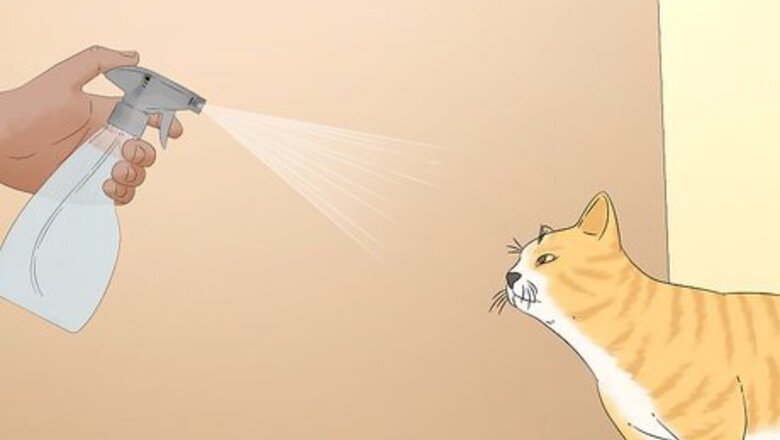
views
Why doesn't squirting your cat work?
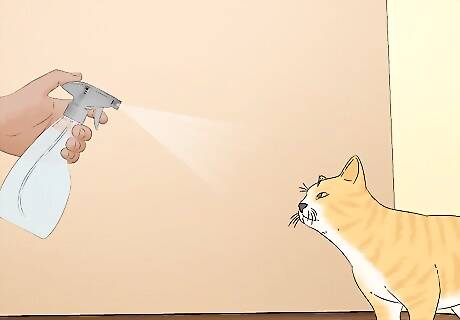
Your cat won't associate the squirt with the behavior. Imagine you're sitting in your home, minding your own business, when all of a sudden someone squirts you with water from out of nowhere. This is how your cat feels. Most of the time, the cat is doing something that comes naturally, like scratching. It's something the cat needs to do, just like grooming or burying waste. You don't want to punish that—you just don't want your cat to do it there.
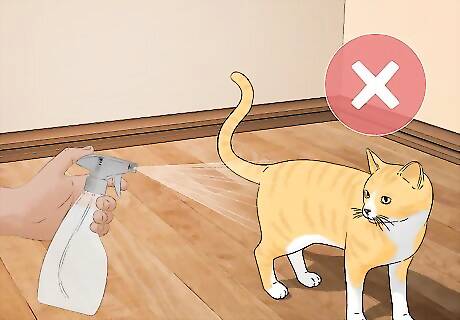
You can't apply the punishment consistently. The spray bottle only works if you're around 24/7 to squirt your cat every single time they engage in the unwanted behavior—and that's just not possible. So whatever it is you're trying to get your cat not to do, they simply learn not to do it whenever you're around. The squirt bottle might seem to work in that you never see your cat engaging in the problem behavior. But, rest assured, they're still doing it when you're not around. For example, you can squirt your cat and they'll stop scratching your couch. Problem solved, right? Nope—they'll just wait until you're gone to declare open season on couch scratching.

Your cat will fear and distrust you. It can take a lot of time and effort to gain a cat's trust—you don't want to do anything to damage your bond. Unfortunately, when you squirt your cat with water, they'll see you as a mean person. You might also end up with a cat that's afraid of spray bottles. This could be a problem if you're trying to use a flea spray or other medication that comes in a spray bottle.

Your cat's stress levels will increase. Because your cat doesn't understand discipline or punishment, your cat will be on edge whenever you're around. This chronic stress can lead to other problems with your cat, including aggression. Being under constant stress also affects your cat's health, just as it would yours. If you want a happy, healthy companion animal, squirting them with water is not the answer.
Best Ways to Stop Problem Behavior
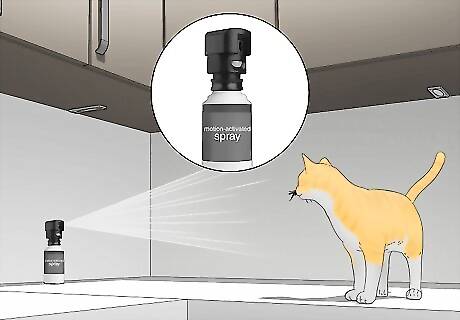
Set up a motion-activated spray to keep your cat off counters. These spray canisters release a puff of air when the sensor is triggered. They do basically the same thing that you would do with a squirt bottle, except now you're not doing it—the counter is. The canister also sits there 24/7 so the deterrent is consistent. It's possible that your cat will get used to the canister over time, or come up with some way to avoid it—cats are clever, after all! Adjust the position of the canister occasionally so that your cat won't anticipate it. You still want to find acceptable replacements to the behavior your cat is expressing—otherwise, they'll just find something else to get into. For example, if your cat is counter surfing because they like the view from up high, get them a perch.
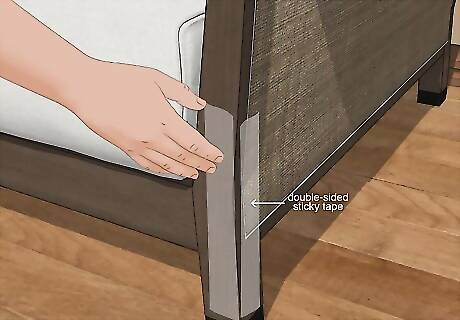
Cover your furniture with double-sided sticky tape. Cats don't like to get their paws sticky! Stick the tape directly to the areas your cat frequently uses. If you have a large area to cover, you can try sticky furniture strips that are much wider than a typical roll of tape to cover more area. You can also do this on shelves or counters. You might also wrap your cords in double-sided sticky tape if your cat likes chewing on those. Try wrapping a shelf or furniture in aluminum foil if you don't want to use something sticky. Cats don't like how aluminum foil feels, so they'll stay away from it.
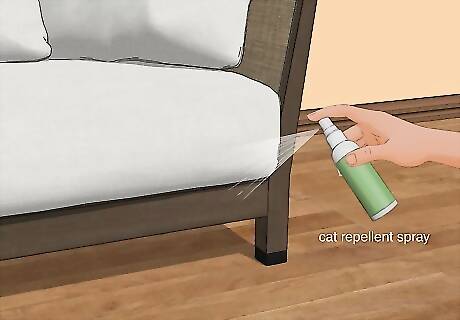
Spray down furniture with a cat repellent for a less obvious deterrent. Try this if you don't like the idea of having the sides of your couch covered in double-sided sticky tape. Cat-repellent sprays typically have a citrus smell, which cats can't stand but is fine (even pleasant) for humans. One whiff and your cat will likely stay away from that area. The only hitch is that you do have to keep reapplying the spray (sometimes several times a day) to keep the smell active. Test a small, inconspicuous area first to make sure the spray won't stain or damage the surface. One downside of this option is that if it works, your cat won't go anywhere near whatever you sprayed. So if you want your cat to come snuggle with you on the sofa but not scratch the sofa, a spray won't do the job for you. Use a plant-safe cat repellent spray for your plants. Cats will instinctually chew on your plants, so the spray is handy if you can't move your plants to an inaccessible spot.

Remove or block access to problem items. Sometimes it's easier to just put something away where your cat can't get it. If it's possible to stop the bad behavior this way, you've found a quick solution that doesn't involve punishment or extended training. For example, suppose you have a bowl of snacks on the counter for convenience and your cat always jumps on the counter to get the snacks. Relocate the snacks to a cabinet and see if that solves the problem. If your cat is scratching your furniture, you might be able to arrange it in such a way that your cat no longer has adequate room to scratch. For example, you might put a chair against a wall so your cat can't get to the back.

Ignore your cat when they're engaging in the unwanted behavior. Sometimes cats just do things for attention—and positive or negative attention doesn't matter to a cat. A cat doesn't know what a frown or stern tone of voice means. All they know is that you're paying them attention and that's what they want. As difficult as it can be, if you don't react in any way when your cat is doing something just for attention, the behavior will stop. For example, if you prefer a quiet cat, you can train your cat to be quiet by ignoring them whenever they meow at you. Couple that with rewards when they're quiet and you'll have a well-behaved cat in no time flat. Eliminate any other reasons your cat might be doing whatever they're doing first. For example, if scratching is a problem, make sure they have a good scratching post.
Providing Toys and Enrichment
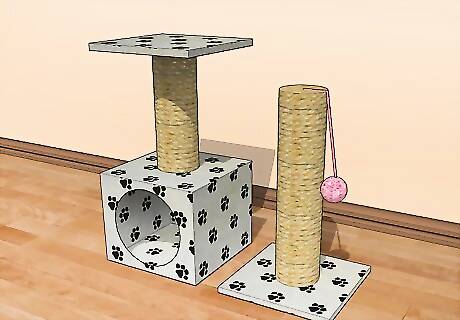
Get a good scratching post if your cat is scratching up your furniture. Scratching is a natural cat behavior—it's something they all need to do. If you provide your cat with a scratching post they like, they'll start using that instead of the furniture. Studies show most cats prefer an upright post at least 3 feet (0.91 m) tall covered in rope. Older cats (10-14 years old) tend to prefer carpet scratchers—perhaps because it's gentler on their paws. Some cats prefer horizontal scratchers. Just watch how your cat is scratching now and get a scratching post that will allow them to replicate the same movement. It's also worth trying a cardboard scratcher. They're really inexpensive so, even if your cat doesn't take to it, you won't be out much. Place the scratcher near where your cat used to scratch—that's the area they associate with that activity. For example, if your cat likes to scratch the side of your couch, put the scratcher right next to the arm of the couch.
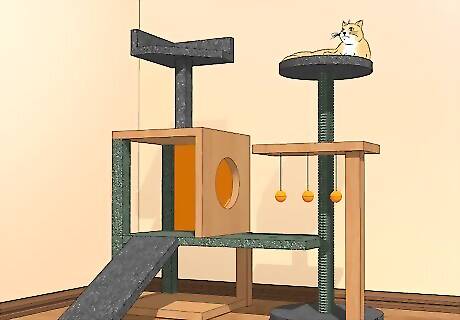
Set up an elevated spot where your cat can sit and observe. Some cats prefer to observe their surroundings from a height. If that's your cat, you might find that they frequently climb shelves, scale up to the top of the refrigerator, or walk around on your counters. Giving your cat a platform or perch at the height it prefers will keep them from climbing on things you don't want them to. It's usually a good idea to put that perch close to the forbidden counter or shelf. Remember: your cat is jumping up there for a reason. Having a nearby perch offers a more attractive alternative where your feline friend can accomplish their objective. A cat tree is another great option that can resolve a lot of different destructive behaviors. It gives your cat scratching posts, a high perch, and a place to play.

Give your cat plenty of toys to keep it entertained. Bored kitties tend to get into trouble looking for ways to entertain themselves. Puzzle toys work great to keep your cat interested so they won't get into something you don't want them to. If you're away from home a lot, spring for a motion-activated cat toy. These can get a little pricey, but they're a way to play with your cat even when you're not there. The Ohio State University's Indoor Pet Initiative has a lot of ideas on ways to keep your kitty entertained and engaged.

Try a slow feeder if your cat scarfs down their food. Cats that eat quickly are likely to get hungry later and raid the kitchen for a snack. If you have a cat who constantly gets into your food or hangs out on kitchen counters, a slow feeder bowl might solve your problem. If your cat won't eat out of the slow feeder at first, try putting some kibble in an empty egg carton to introduce them to the concept. Just put a few pieces in each of the spaces. These bowls also exercise your cat's hunting and foraging instincts to keep them engaged so they're less likely to be destructive in general. Slow feeders also help if you have a cat who always eats too fast and then pukes the food right back up.

Spend time each day playing with your cat. Playtime strengthens your bond and gives your furry friend some much-needed exercise and mental stimulation. While cats don't necessarily need as much playtime as dogs, set aside a couple of 5-10 minute intervals each day to have fun with your cat. Playing with your cat is good for you too! Studies show cats lower your stress and anxiety levels, which calms your nervous system and can also lower your blood pressure. Take time each day to love on your cat as well. If they're after your attention, daily pets and nuzzles will go a long way.
Training Your Cat with Treats and Praise
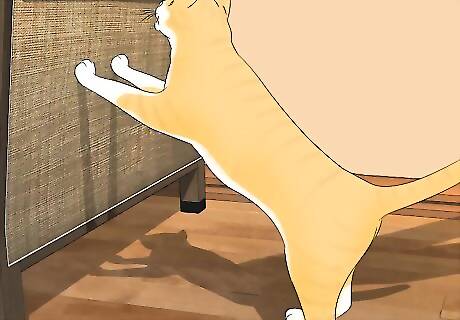
Divert your cat when they engage in unwanted behavior. You've figured out why your cat is engaging in the unwanted behavior and you've come up with an alternative outlet. Now, when you see your cat doing the thing you don't want, gently redirect them to the alternative you've provided. For example, when your cat scratches your sofa, you might pick them up and move them to the scratching post. When you do this, don't yell at your cat, and you definitely don't want to cause it any pain or discomfort. You're not punishing your cat, you're just showing them an acceptable way to do the thing they need to do.

Reward your cat for behavior that you like. Keep treats or dry food on you at all times. Whenever you see your cat doing what you want them to do, reward them immediately with food. This creates an association between that behavior and a food treat. For example, if your cat previously scratched on your sofa, you would reward them every time they used the scratching post. While it is possible to train your cat to respond to a clicker, studies show food tends to be a much bigger motivator for cats. Pets and attention might work for some cats, but for most of them, food will always be the biggest motivator.

Decrease the frequency of food rewards gradually over time. Exchange the treats or dry food with other positive rewards, such as a "good kitty" or a chin scratch. Start by giving your cat food 3 out of 4 times that you reward the behavior. Then, after a couple of weeks, decrease it to only half the time. Keep gradually decreasing the treats at the same rate until you're only giving them treats occasionally. Don't eliminate the treats completely, though! If your cat continues using the alternative and doesn't get treats anymore, they might become frustrated and start acting out again.

















Comments
0 comment